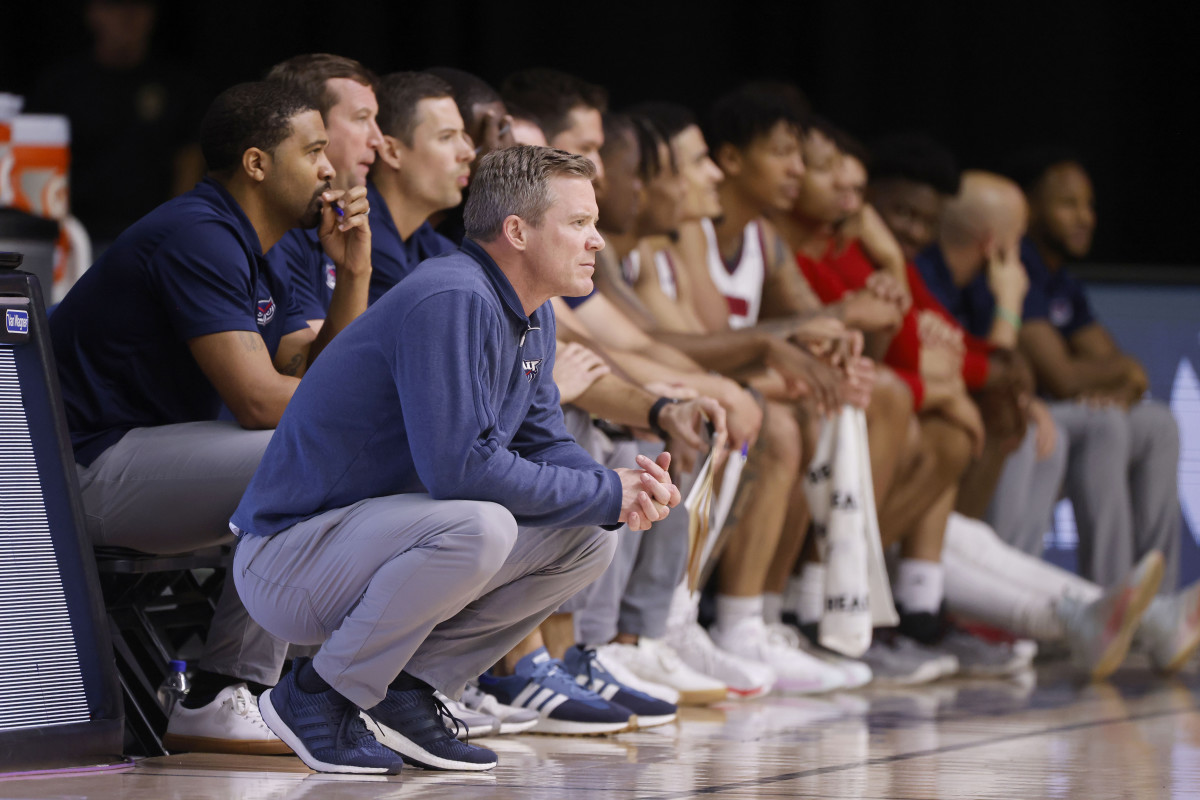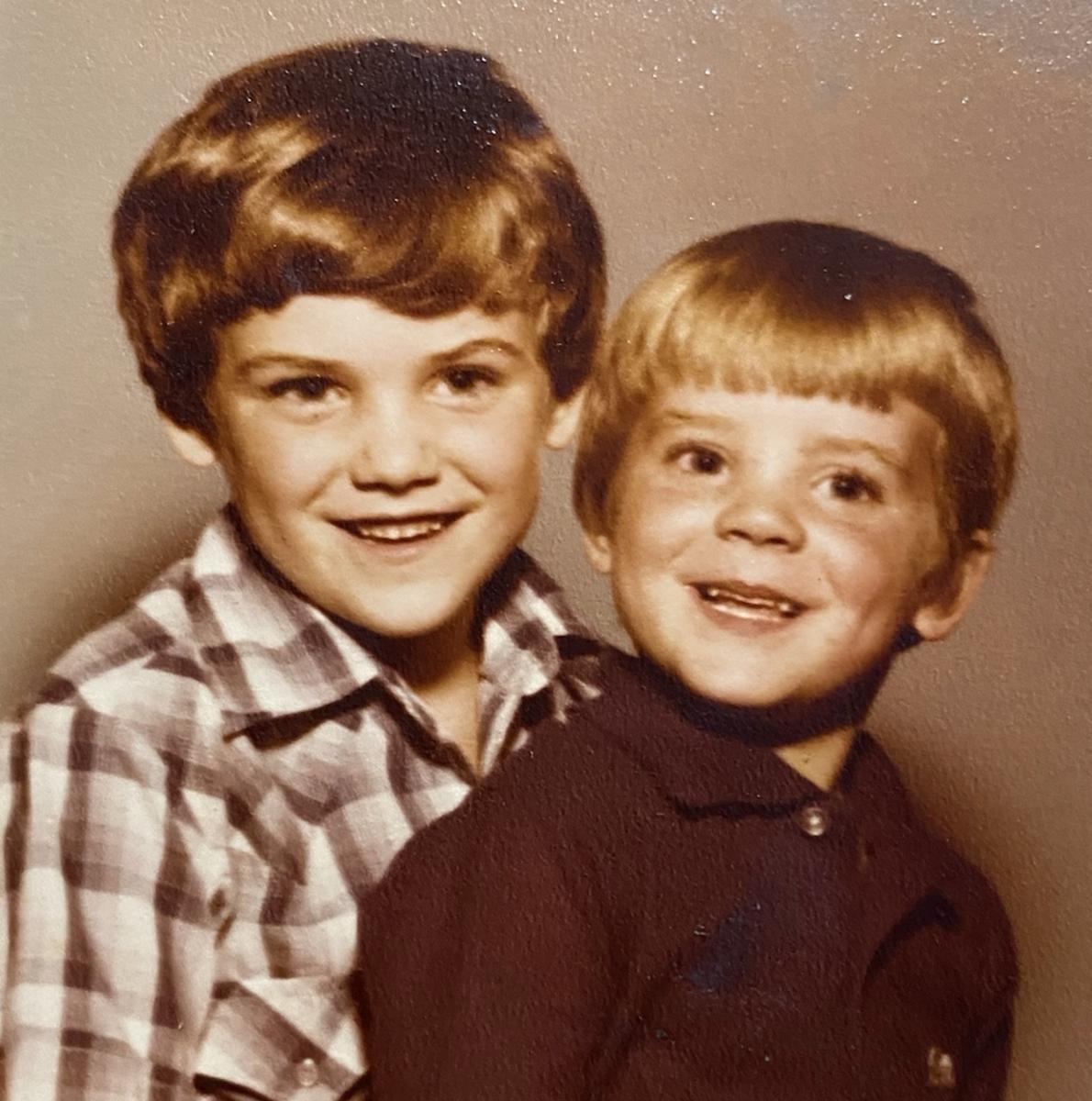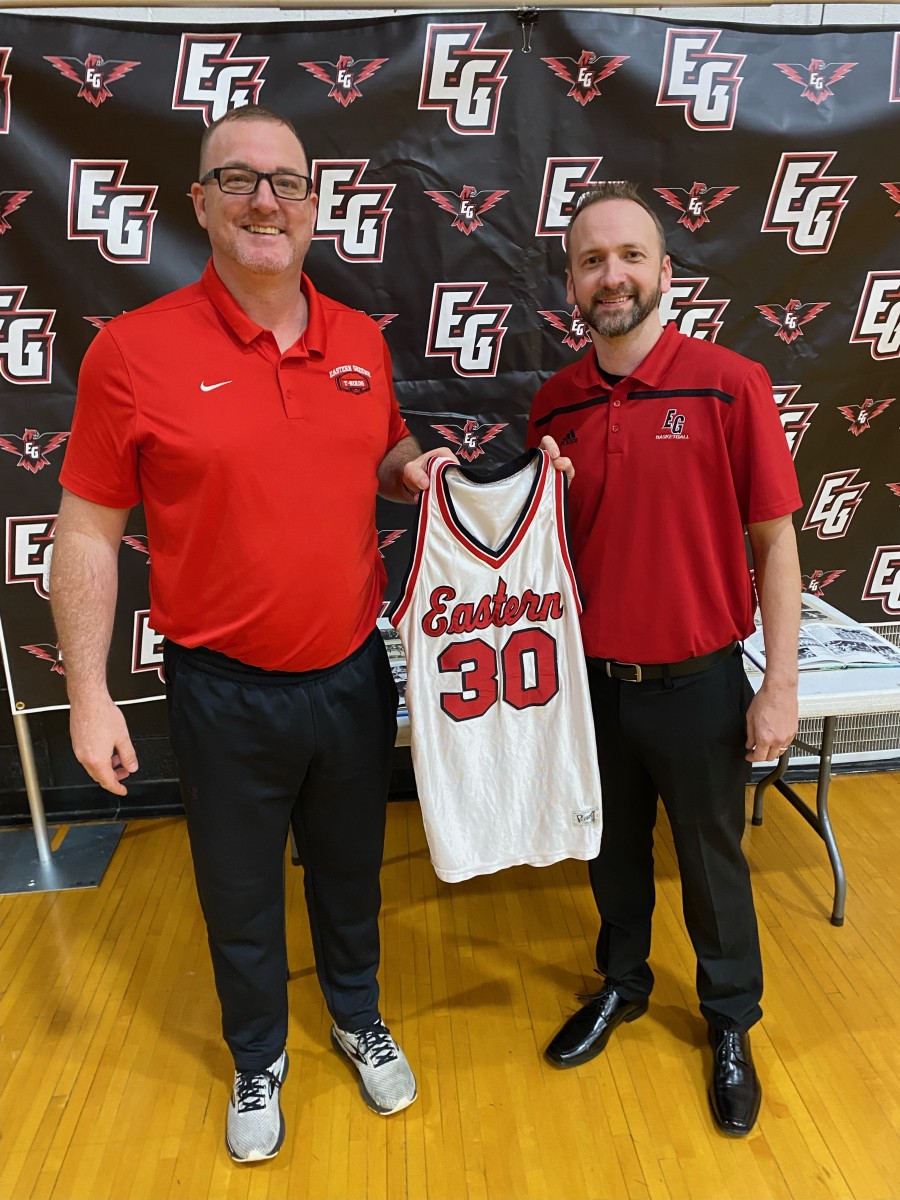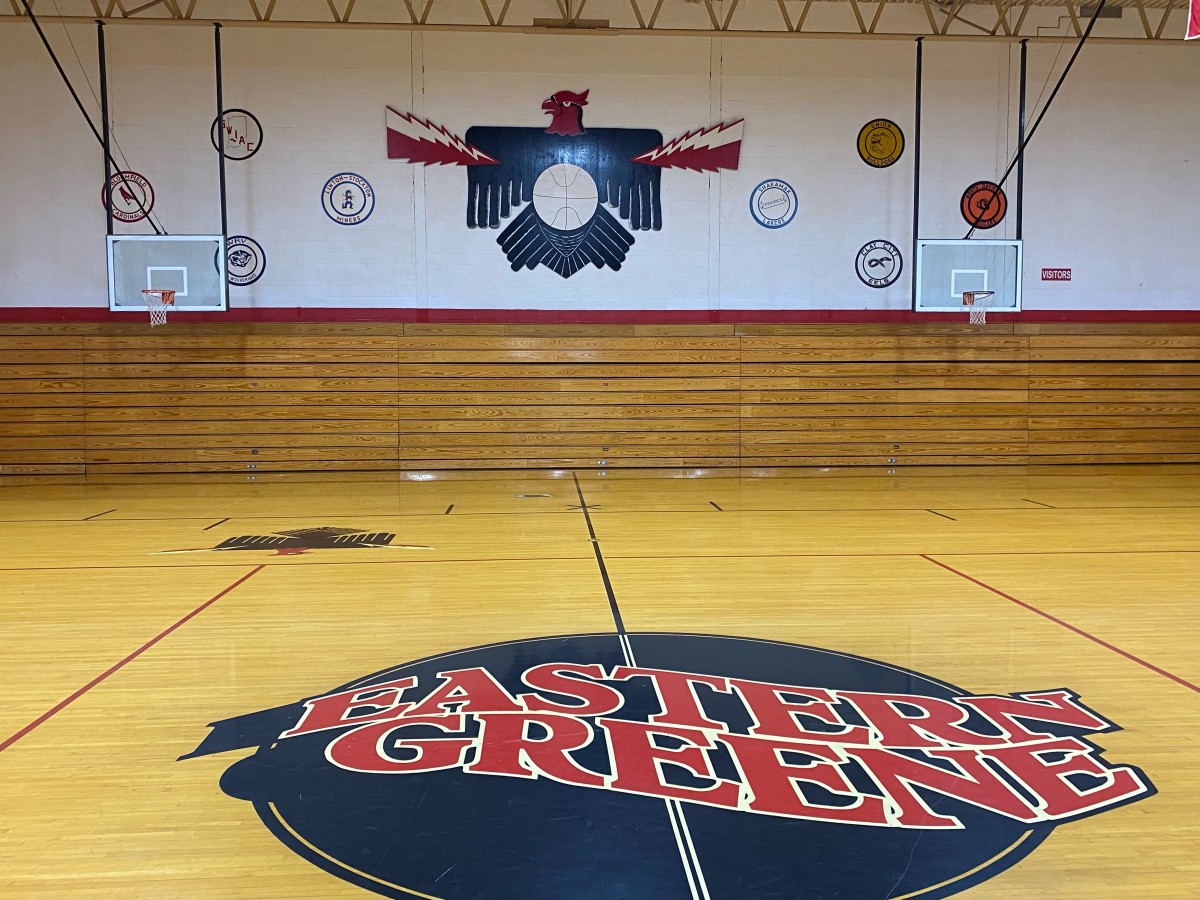How a Hoosier at Heart Blazed His Own Trail to the Final Four

Dusty May’s story begins underground. It starts in the mines of southwestern Indiana, where the coal boom of the late 1800s and early 1900s attracted laborers from surrounding states. More than a century ago, Dusty’s great-grandfather moved from Ohio, pitched a tent in a field in Jasonville, Ind., and went to work as a miner.
Generations of May men followed in that line of work, including Dusty’s dad. Donald “Duck” May worked 27 years in a Greene County coal mine—some of it below ground, some doing surface strip-mining—before retiring. Most of the mines in the area are closed now, but they are the reason the basketball coach of the Final Four–bound Florida Atlantic Owls was born a Hoosier.
There is a lot beneath the surface of 46-year-old Dusty May. Poised, polished and professional in his public life, Dusty doesn’t project the image of a coal miner’s son. Truth be told, he is more of a mama’s boy—Sandy Garrett’s child—in terms of parental influence.
Dusty is the May man who is different. The first one in the family to graduate from a four-year college. The one who blazed his own trail, taking him far away from the hardscrabble limestone hills where he grew up and where most of his relatives still live. The one who is proud of his Hoosier roots, but also aware of the twists those roots have taken underground.
Even now, having this surreal and celebratory moment as the hero coach of a school with no prior history of basketball success, complicated family dynamics are at work on the subterranean level. His parents’ messy divorce when he was a child created fissures that were not easily closed. Being a rising star in his profession doesn’t make Dusty immune to something millions of people can relate to.
Like weddings, graduations, births and funerals, a surprise Final Four is the kind of major life event that can bring submerged situations back to the surface. There is pride but estrangement for some in Greene County. Opportunism could be in play. The inner circle starts to expand during exciting times like this, and that can become awkward.
Everyone back home is rooting for Dusty, and he’s grateful for that. There are just differing layers of loyalty and connection.

Dusty May almost didn’t make it out of the Terre Haute hospital where he was born. A late-term checkup turned into an immediate C-section, and out he came a month early with collapsed lungs. He was taken to the ICU, and his parents were told the first 72 hours were critical to his survival. Sandy watched the clock anxiously until that milestone passed.
There would be no stopping him thereafter. Tagging along after older brother Dave and a flotilla of cousins in an outdoorsy family, there was plenty of adventure to be had. But Dusty gravitated away from hunting and fishing and toward basketball and baseball.
After the divorce, Sandy moved her sons from Jasonville, on the west side of Greene County, to Stanford, on the east side. Dave wound up spending more time with Duck, and Dusty was with Sandy.
“When we moved, it was basically her and I,” Dusty says. “I can remember her waking up at 5 a.m., getting ready for work, taking me where I needed to go, then coming home from work after a full day and running me around again. A lot of sacrifice. She’s tough. She’s weathered a lot of storms herself.”
Upon arrival at Eastern Greene as a first-grader, two things became fixtures in Dusty’s life: basketball and classmate Anna Nonte.
At that early age, he was such a ball-hawking dervish on the court that Sandy made him wear sweatpants to reduce the number of floor burns on his legs. On one of Dusty's first days of school, he asked his teacher, Becky Noel, whether she wanted to watch him shoot. Noel, who still remains close to Dusty and even attended a couple of FAU games this year, came away impressed after he made shot after shot.
Nonte, who was a cheerleader, can be seen with Dusty in team pictures dating back to those elementary school days, and they remained in the same photos all the way through Eastern Greene High School. They started dating at age 15, were on and off through college (she went to Purdue, he went to Oakland City University for a year and then Indiana) and were married in 2000. Childhood friends and teenage sweethearts, they have four kids together.

“I don’t remember a time when I didn’t love Dusty and have feelings for Dusty,” Anna says. It has been a near-lifelong romance, with a basketball foundation.
High school basketball is, of course, the heartbeat of athletics in Indiana. But there are hotbeds within the hotbed, and the southwest corner of the state is among the most rabid.
Most of the schools in Greene County don’t play football, which increases the emphasis on hoops. Since Indiana moved to multiclass basketball in 1996–97, smaller schools from the area have routinely advanced to the state championship games in the smallest classifications, 1A and 2A. The Linton Miners, county rivals of Eastern Greene, played for the 2A title last week.
Dusty and his buddies would put up hay bales and hang tobacco in barns for spending money, and they were part of a standout cross-country program. But mostly their lives revolved around basketball. Fans packed Eastern Greene’s sweltering, 1,300-seat gym to see them play.
Dusty’s time as a fierce point guard at Eastern Greene coincided with the last hurrah of single-class basketball. That was Hoosier Hysteria in its purest form: hundreds of schools, large and small, battling for one state title, the stuff of myth and legend and film. “This is what Indiana is here for; we’re a flyover state, but we’re a basketball state,” says Dusty’s cousin, Kristianne May. “They didn’t make the movie for no reason.”
Hoosiers celebrated the ultimate single-class Cinderella, Milan, the 1954 state champion. But for most of the small schools in the single-class era, simply winning a sectional title meant everything. Earning bragging rights over bigger rivals was a ticket to eternal local fame.
Eastern Greene coach Mark Barnhizer was a classic Indiana character. Still is, as the coach at Lafayette Jeff High, not far from Purdue in the northwest part of the state. When coaching the Thunderbirds, Barnhizer wasn’t opposed to doing what he could to enhance his home court advantage. One end of the gym has a stage, and the T-Birds band would fill that space and blare music during the first half when the visiting team was shooting at that basket. In the second half, when Eastern Greene was going that direction on offense, the band was shut down, and the stage curtain was closed to improve depth perception.
Barnhizer had some Bob Knight in him, an intensity and demanding style that was commonplace during a different time in Indiana. With May’s classmates showing early promise, Barnhizer had them come in as seventh-graders to play pickup ball at 6 a.m. against adults. Regular practices were borderline brutal.
“It was very intense,” says Jamie Hudson, the current coach at Eastern Greene and a teammate of Dusty’s at the school in the 1990s. “You’re going to play hard, you’re going to compete, you’re not going to back down. That wasn’t just Friday and Saturday night—that was Monday through Thursday. We had knockout, drag-out wars in practice. Growing up in a farming community—the toughness, we’re going to outwork you. That’s just the mentality we had here in our community. We had it, but Barnhizer took it a step further.”
That included one workout that will live in infamy, known among the players as “The Shoals Practice.” The Thunderbirds had just thumped the Shoals Jug Rox, but Barnhizer didn’t think his team showed enough toughness. Details of what happened at that practice are not easy to come by.

“We won—we won big, I think—and we didn’t get enough rebounds or something,” Hudson recalls. “We come to practice, and there are no balls. Two-hour practice, no balls. Coaching today, you couldn’t do that.”
Barnhizer agrees: “If I did that today, I wouldn’t have a job. Back then you could pull it off.”
Running a flex offense and disruptive man-to-man defense, the Thunderbirds went 38–5 over Dusty’s final two seasons, winning conference and county tournament championships. Before both seasons, the team all shaved their heads with straight razors as a sign of unity, a nice idea but a tough look in the high school yearbooks, in retrospect.
Dusty was an undersized, four-year starting point guard who excelled in basketball IQ and sheer effort. The guy who ran so hard in cross-country that he would throw up after races brought the same determination to the court. “Those kids would run through a wall for you,” Barnhizer says, “and Dusty was the leader of it.”
But those T-Birds also were a classic example of the reality of single-class Indiana hoops. Luck of the sectional draw was huge, and they had none. With fewer than 500 students, Eastern Greene was assigned to the Bedford North Lawrence Sectional. The host Stars had a much bigger enrollment and were a state powerhouse, riding the wave of the legendary Damon Bailey, who led the school to the 1990 state title. While the schools Eastern Greene’s size in its own county were largely battling one another for sectional titles, the T-Birds were given a thankless task.
“We want out of this sectional,” Barnhizer fumed to the Bedford Times-Mail after the 1995 defeat. “We want out. Among schools under 500, we’re probably the best team in Indiana.”
When multiclass basketball arrived, Eastern Greene won five 2A sectional titles between 2001 and ’12. But count Dusty among the Hoosier Hysteria purists.
“I loved single-class basketball,” he says. “I loved the challenge going against the big boys. Those [sectional] losses were painful, but when you look back at who you lost to, you understand why. It’s almost like that at our level [in college, as a member of mid-major Conference USA], where winning the conference championship and getting to the [NCAA] tournament is what our state championship was at that time in one-class basketball.”
It wasn’t even clear to him at the time, but Dusty’s accumulated life experiences were paving the way to coaching success. Barnhizer says, “I saw really great coaching material in him. Nobody knew he was going to be this successful, but he was going to be good at whatever level he worked.”
Six weeks into his freshman year of college, Dusty called his mom in tears. He didn’t like it at Oakland City, just outside of Evansville. Sandy talked him into finishing the year, but he was ready to end his playing days and pursue a career teaching history and coaching high school basketball. The best place in the state for an aspiring coach was at nearby Indiana, as a manager under Bob Knight. Dusty had mowed grass for someone with a connection to the program, and he got a chance to join the Hoosiers.
“I wondered, ‘Why would you quit playing ball to go be a manager and wash the players’ clothes,’” says Dusty’s uncle, Mark May. “But he was on the right track. He knew what he wanted and was intelligent enough to see what he needed to do.”
Work ethic is a family trait. Duck May is 70 years old, but after retiring from the coal mine he opened another business: M & M Mower Repair. In addition to fixing mowers, he buys and sells other power equipment of all kinds. Duck moved into the back of the building after the divorce and built his current home at the same time.
“Everybody’s asking me, ‘When you gonna retire, Duck?’” he says. “If God calls and tells me I’m gonna die at 4:30, I’m taking off at noon that day.”
Hard work and basketball acumen helped Dusty earn a recommendation from the Indiana coaches to join Henry Bibby’s staff at USC after graduation. After two years of rubbing nickels together to get by in high-rent Los Angeles, Dusty and Anna moved back home so he could work in basketball operations at Indiana. Among those May mentored in the 2003–04 season was former Hoosier hero Dane Fife, who joined the staff as a grad assistant after his playing career ended.
“He was tough on me, but he definitely made me better,” Fife says. “Our postpractice basketball games [with the managers and other staffers] would get really heated. We almost came to blows several times. We had people not willing to play with us because it was so miserable.”
There also was a mid-winter football game in the snow in Indiana’s Memorial Stadium, adjacent to Assembly Hall. Dusty and Dane were starting quarterbacks on opposite teams in what started out as a flag football game but essentially became tackle.
“Don’t let that calm demeanor kid you, that John Wooden stoicism,” Fife says. “That’s only recently become a development for him. He was a really good player, a good trash-talker and an excellent giver of nicknames. He’s intensely competitive.”

He has also remained a friend to Fife, who last coached as an assistant to Mike Woodson at Indiana in the 2021–22 season. Fife was fired last year, and spent a few days with Dusty in Boca Raton in January to pick his brain.
By then, the Owls had become a built-from-scratch national phenomenon. This isn’t much for a transfer portal team; Dusty and his staff recruited most of the players right out of high school. His personal story has helped him relate to some players with similar backgrounds, and his coaching acumen was previously established with four straight winning seasons at a school that had 17 losing seasons in the 21 before Dusty arrived in 2018.
Fife had played for Knight and coached under Tom Izzo. He’s been around greatness. What he found when he hung out with Dusty looked familiar.
“Those were kind of dark days for me,” Fife says. “He stepped up for me. I was in awe of him as a leader, watching him. He’s kind of the ultimate coach right now, because he’s able to manage being a family man and getting the most out of his players. The whole organization is a reflection of his competitive spirit and calm demeanor. He reminds me of Tom Izzo in the way people respond to his leadership.
“He’s not chasing fame. He’s not chasing the money. I think he’s chasing fulfillment and happiness.”
Along Indiana State Road 54, the video boards outside Eastern Greene middle school and high school both are displaying FAU logos this week. Good luck Dusty!!!, the boards read. We are so proud of you!
The schools sit in a rural expanse dotted with a constellation of small towns: Cincinnati (not the Ohio version) is a few miles away; beyond that is Popcorn. Neighboring counties include the hometowns of Larry Bird (French Lick), Cody, Luke and Tyler Zeller (Washington), and two of the three winningest coaches in Indiana high school history, J.R. Holmes (Avoca) and Jack Butcher (Loogootee).
Inside the school, a slideshow further proclaims local pride in Dusty. Birds of a feather flock together, one screen says, showing both the Owls and T-Birds logos with a picture of Dusty. There have been FAU-themed dress-up days all week. A video clip was being compiled of “anyone that knows coach Dusty May” to send him a good-luck message. And there will also be a community watch party Saturday night, when the Owls take on San Diego State for the right to play for the national championship. If FAU wins, there will be another watch party Monday night—perhaps followed by a two-hour delay in starting school Tuesday, since tip-off is after 9 p.m. ET.
“We want everyone to come to a community location and soak it up, enjoy it, and support Dusty,” says Nathan Martindale, athletic director at Eastern Greene Middle School and an alum of the school.
Among many other family members, Sandy Garrett will be watching FAU in person Saturday at NRG Stadium in Houston. She was there in Madison Square Garden to see the Owls punch their Final Four ticket, as a mid-major program with zero all-time NCAA tournament victories won four in a row to reach the Promised Land.
While standing on the court watching the FAU postgame celebration and net-cutting, Sandy saw Dusty coming her way. He embraced her and thanked her.
“Sometimes when parents divorce, things can go different ways,” Sandy says. “For our boys, things have gone the right way—they’ve turned out to be great fathers. It’s been hard at times, but the boys couldn’t be bigger blessings.”
As Dusty May’s story reaches this above-ground milestone, the coal miner’s son and mama’s boy can be thankful for where he’s been and excited about where he’s going. It’s been a long and sometimes difficult path from the hills of Greene County, but the journey has made the man.
